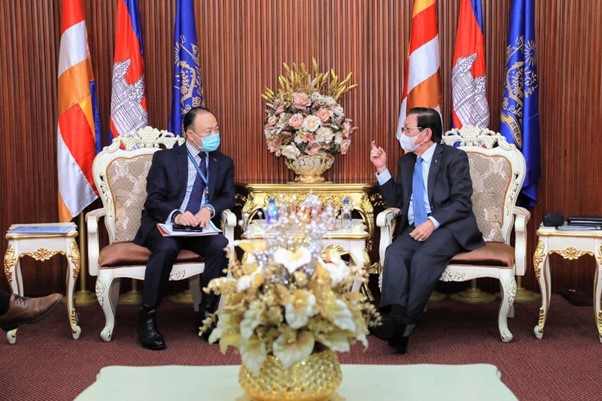Australia gifts eWater Source to Cambodia
In a special ceremony in Phnom Penh, Australia’s Ambassador to Cambodia, His Excellency Pablo Kang formally gifted access to Australia’s national water modelling platform, eWater Source to Cambodia’s Minister of Water Resources and Meteorology (MOWRAM) His Excellency Lim Kean Hor.
This technical exchange forms part of Australia’s ongoing support for sustainable water management throughout the Mekong region.

eWater Source, Australia’s national hydrological modelling platform will assist the Cambodian Government to better understand the availability of water resources throughout the country. It will provide a stronger evidence base on which to make decisions about the development of water infrastructure and the allocation of water for a range of users – cities and towns, farming and freshwater fisheries, hydropower and industry.
“The sustainable management of Cambodia’s precious water resources is crucial to support the socio-economic development of our cities and of our growing agriculture and energy sectors, while preserving our unique environment” stated His Excellency Lim Kean Hor.
“We welcome the offer by the Government of Australia to provide both technical tools and capacity building support so that Cambodians can learn from the Australian experience and improve our management of water resources for the entire country.”
In response, Ambassador Kang said “We are pleased to share an important Australian innovation – the eWater Source platform –with our neighbours and friends in Cambodia, because doing so will help ensure water governance is based on solid evidence and can contribute to Cambodia’s post-COVID recovery”
eWater has worked with the Mekong River Commission (MRC) its member countries (Cambodia, Laos, Thailand and Vietnam) for many years. Starting in 2013, eWater developed a Source model of the entire Mekong River and major tributaries, ultimately leading to eWater contributing to the 2018-19 MRC Council Study using Source to integrate information and existing basin models.
In 2017-19, eWater, in partnership with UNESCAP, Geoscience Australia and the Australian Bureau of Meteorology implemented a pilot in Cambodia using space-based data to help water users in drought prone countries to better understand and manage droughts. eWater provided updated technology and access to satellite data through the Geoscience Australia Open Data Cube to improve the ESCAP Regional Drought Mechanism. In 2019 eWater was appointed as an adviser to MOWRAM in Cambodia under a World Bank project.


 Summary of basin characteristics.
Summary of basin characteristics. 
 Participants at a workshop to develop scenarios for the Xe Kong basin. Attendees were from NRERI, other Lao PDR government agencies, the World Bank and eWater
Participants at a workshop to develop scenarios for the Xe Kong basin. Attendees were from NRERI, other Lao PDR government agencies, the World Bank and eWater